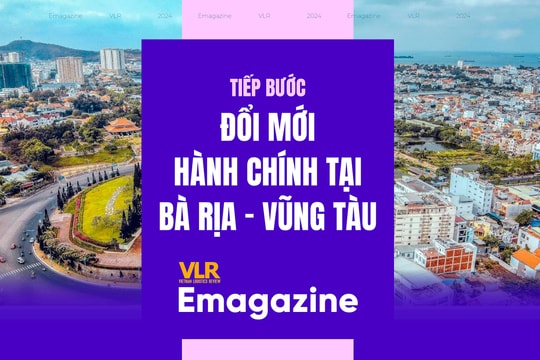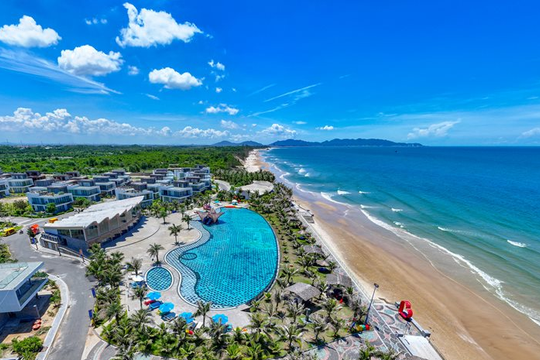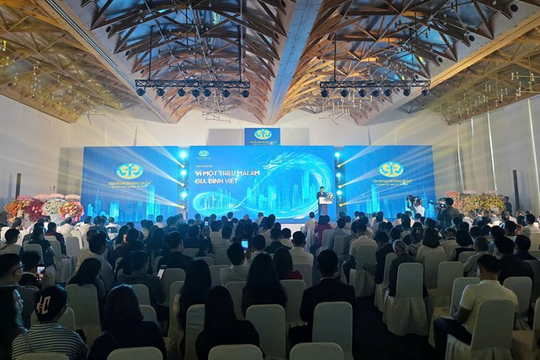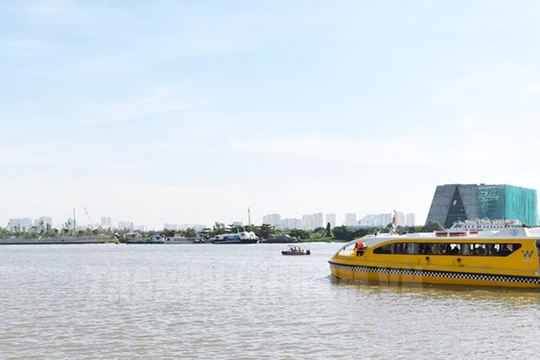BR-VT is located in an international maritime route, in the middle of Hong Kong and Singapore. Therefore CM- TV port group can play an important role not only in the country but also in the region: together with Hong Kong and Singapore to serve countries in Asian Pacific region.
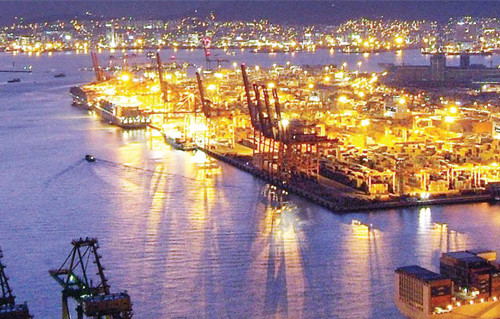
With a convenient geographical position, there should be plans to develop CM- TV to a regional gateway to the sea of the South Eastern, and to an important link of the international route.
As planned, there are totally 38 projects of general ports and container terminals in CM-TV port group. Currently, there have been 17 general ports and container terminals operating: 11 general ports with capacity of 21.3 million tons and 6 container terminal with capacity of 6.8 million TEU. However, they reach only under 20% of designed capacity. So there have still been many problems to solve to have a well-operating port group as expected.
CM-TV is deep-water port which enables to receive large vessels- a thing that is impossible for other inland ports like Hai Phong, Can Tho. To make good use of natural geographical conditions, there should be a 2-step strategy:
1. Making the port group a main import- export gateway for the South Eastern Economic Zone.
2. Then, making it an international transshipment port.
There are 3 groups of solution for the developing of C-TV port group:
I. Group of solution on infrastructure
1. Investing and developing transport system to connect the port group to the international transport system
The port group is currently connecting to the transport system by road and water-way: National Road 52 connecting to Bien Hoa and to HCMC by Dau Giay- Long Thanh Expressway; the river system of Dong Nai Saigon able to connect the ports to provinces as Dong Nai, HCMC, and Western provinces.
Upgrading transport ability on these routes is extremely important to the port exploitation in the area. The water-way system is able to connect to important ports as Tan Cang, Dong Nai to receive cargo, especially containers. Therefore, developing water-way and co-operating with these ports is an important solution for the exploitation of CM-TV port group.
In the future, if there is no railway connecting to CM-TV, it is difficult for transporting cargo especially with bulk cargo, not storing in containers.
2. Building port rear-base
The rear-base of the port includes warehouse systems in and outside the port with equipment of stevedoring and storing: a place to receive cargo unloaded from vessels or to collect cargo to load on vessels. Therefore, the rear-base not only enhance clearance ability but also help to set free vessels quickly. With large ports, warehousing system and satellite ports help enhance clearance ability of the main port. CM-TV port group should research building its rear-base with close cooperation to other ports as Dong Nai, Tan Can and ICDs in HCMC and Dong Nai.
3. Building service and assisting industry establishments.
Rear-base warehouses and ports are logistics service center, therefore there should be establishments to provide strong enough logistics services at these centers.
Establishments of ship repair, stevedoring equipment, container boxes also contribute to port exploitation.
II. Groups of solution on exploitation
Ports develop only when they can attract cargo and vessels- a task of exploitation. The line form has changed the world into a network that covers continents. There are two levels in the system: main lines and subordinate lines to consolidate cargo for main lines (feeder). Main lines pass by Hong Kong or Singapore while transporting to Vietnam and feeders consolidate cargo to these two ports. Cargo from Vietnam to Europe and America is consolidated at Hong Kong or Singapore for mother vessels.
Large vessels of main lines anchor when a port is able to provide enough required cargo and good service quality. Service quality includes time to set free and stevedoring fee. Although low stevedoring fee is one of important factors to attract, time to set free is the thing that mainlines pay much attention to.
There should be two things to be solved at the same time in the matter of exploitation: stevedoring equipment for port front-base to work efficiently and with low price and consolidating enough cargo for export.
Caro are currently exported from different ports so their sources are scattered. Consolidating to an area will create larger amounts of cargo which help lower stevedoring price. To do this, there should be good planning and allocations among ports nationwide.
When attracting large vessels of mainlines to ports, there will be the need for transshipment cargo, that is, cargo from other places, not from Vietnam only, will be brought here and be loaded on mother vessels.
III. Other solutions
There are 38 projects for the planning of CM-TV. It is easy to attract investment with small projects however there are also disadvantages:
-Each project will lead to the construction of a small port with different exploitation strategy, so it is difficult to have a common strategy for the whole area.
- Infrastructures as berths are fragmented it is difficult to make a large group port.
However, there should be a plan to make different projects to have the same strategy of investment and exploitation.
It is a complicated large matter to have synchronous development of CM-TV port group. This requires effort not only from the province of BR-VT but also from the transport sector and other provinces. There should be research on fields mentioned to have particular synchronous solutions.




.jpg)
.jpg)
.jpg)
